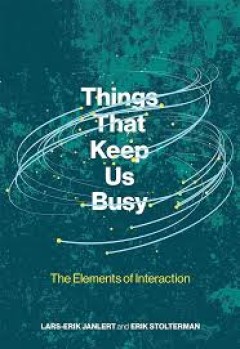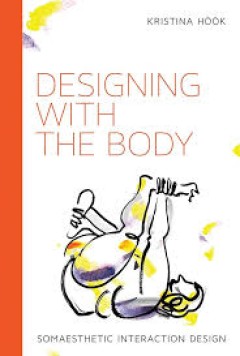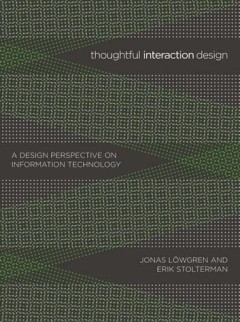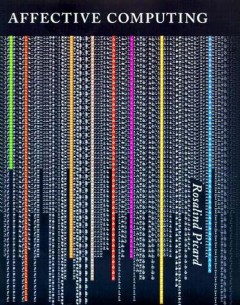Filter by

High-Performance Modelling and Simulation for Big Data Applications: Selected…
This open access book was prepared as a Final Publication of the COST Action IC1406 “High-Performance Modelling and Simulation for Big Data Applications (cHiPSet)“ project. Long considered important pillars of the scientific method, Modelling and Simulation have evolved from traditional discrete numerical methods to complex data-intensive continuous analytical optimisations. Resolution, sc…
- Edition
- 1
- ISBN/ISSN
- 9783030162726
- Collation
- XIV, 352
- Series Title
- -
- Call Number
- -

CyberParks – The Interface Between People, Places and Technology: New Appro…
This open access book is about public open spaces, about people, and about the relationship between them and the role of technology in this relationship. It is about different approaches, methods, empirical studies, and concerns about a phenomenon that is increasingly being in the centre of sciences and strategies – the penetration of digital technologies in the urban space. As the main outco…
- Edition
- 1
- ISBN/ISSN
- 9783030134174
- Collation
- XV, 323
- Series Title
- -
- Call Number
- -

Haptics: Science, Technology, Applications: 13th International Conference on …
This open access book constitutes the proceedings of the 13th International Conference on Human Haptic Sensing and Touch Enabled Computer Applications, EuroHaptics 2022, held in Hamburg, Germany, in May 2022. The 36 regular papers included in this book were carefully reviewed and selected from 129 submissions. They were organized in topical sections as follows: haptic science; haptic technolog…
- Edition
- 1
- ISBN/ISSN
- 9783031062490
- Collation
- XVIII, 514
- Series Title
- -
- Call Number
- -

Things that keep us busy :the elements of interaction
We are surrounded by interactive devices, artifacts, and systems. The general assumption is that interactivity is good -- that it is a positive feature associated with being modern, efficient, fast, flexible, and in control. Yet there is no very precise idea of what interaction is and what interactivity means. In this book, Lars-Erik Janlert and Erik Stolterman investigate the elements of inter…
- Edition
- -
- ISBN/ISSN
- 9780262341813
- Collation
- 1 online resource (231 pages) :illustrations
- Series Title
- -
- Call Number
- -

Designing with the body :somaesthetic interaction design
Interaction design that entails a qualitative shift from a symbolic, language-oriented stance to an experiential stance that encompasses the entire design and use cycle. With the rise of ubiquitous technology, data-driven design, and the Internet of Things, our interactions and interfaces with technology are about to change dramatically, incorporating such emerging technologies as shape-changin…
- Edition
- -
- ISBN/ISSN
- 9780262348324
- Collation
- 1 online resource.
- Series Title
- -
- Call Number
- -

Gameworld interfaces
Digital games tend to follow one of two trends when presenting game information to the player. The game may present game information in a naturalistic way as part of the imaginary universe presented by the game, avoiding symbolic or abstract representations that seem alien to the fictional world. Alternatively, the game may use graphical augmentations such as superimposed information, menus, an…
- Edition
- -
- ISBN/ISSN
- 9780262319065
- Collation
- 1 online resource
- Series Title
- -
- Call Number
- -

Thoughtful Interaction Design: A Design Perspective on Information Technology
How to think about the shaping and composing of information technology from a design perspective: the aesthetics and ethics of interaction design.OCLC-licensed vendor bibliographic record.
- Edition
- -
- ISBN/ISSN
- 9780262256575
- Collation
- 1 online resource (xiii, 198 pages) :illustrations
- Series Title
- -
- Call Number
- -

Affective computing
OCLC-licensed vendor bibliographic record.
- Edition
- -
- ISBN/ISSN
- 9780262281584
- Collation
- 1 online resource (xii, 292 pages) :illustrations
- Series Title
- -
- Call Number
- -

Beyond the desktop metaphor :designing integrated digital work environments
Leading developers and researchers report on what the next generation of digital work environments may look like, analyzing the theory and practice of designing "out of the box" to facilitate multitasking, collaboration, and multiple technologies.OCLC-licensed vendor bibliographic record.
- Edition
- -
- ISBN/ISSN
- 9780262256483
- Collation
- 1 online resource (vi, 360 pages) :illustrations
- Series Title
- -
- Call Number
- -

The Metainterface: The Art of Platforms, Cities, and Clouds
How the interface has moved from the PC into cultural platforms, as seen in a series of works of net art, software art and electronic literature. The computer interface is both omnipresent and invisible, at once embedded in everyday objects and characterized by hidden exchanges of information between objects. The interface has moved from office into culture, with devices, apps, the cloud, and d…
- Edition
- -
- ISBN/ISSN
- 9780262346559
- Collation
- 1 online resource (248 pages).
- Series Title
- -
- Call Number
- -
 Computer Science, Information & General Works
Computer Science, Information & General Works  Philosophy & Psychology
Philosophy & Psychology  Religion
Religion  Social Sciences
Social Sciences  Language
Language  Pure Science
Pure Science  Applied Sciences
Applied Sciences  Art & Recreation
Art & Recreation  Literature
Literature  History & Geography
History & Geography